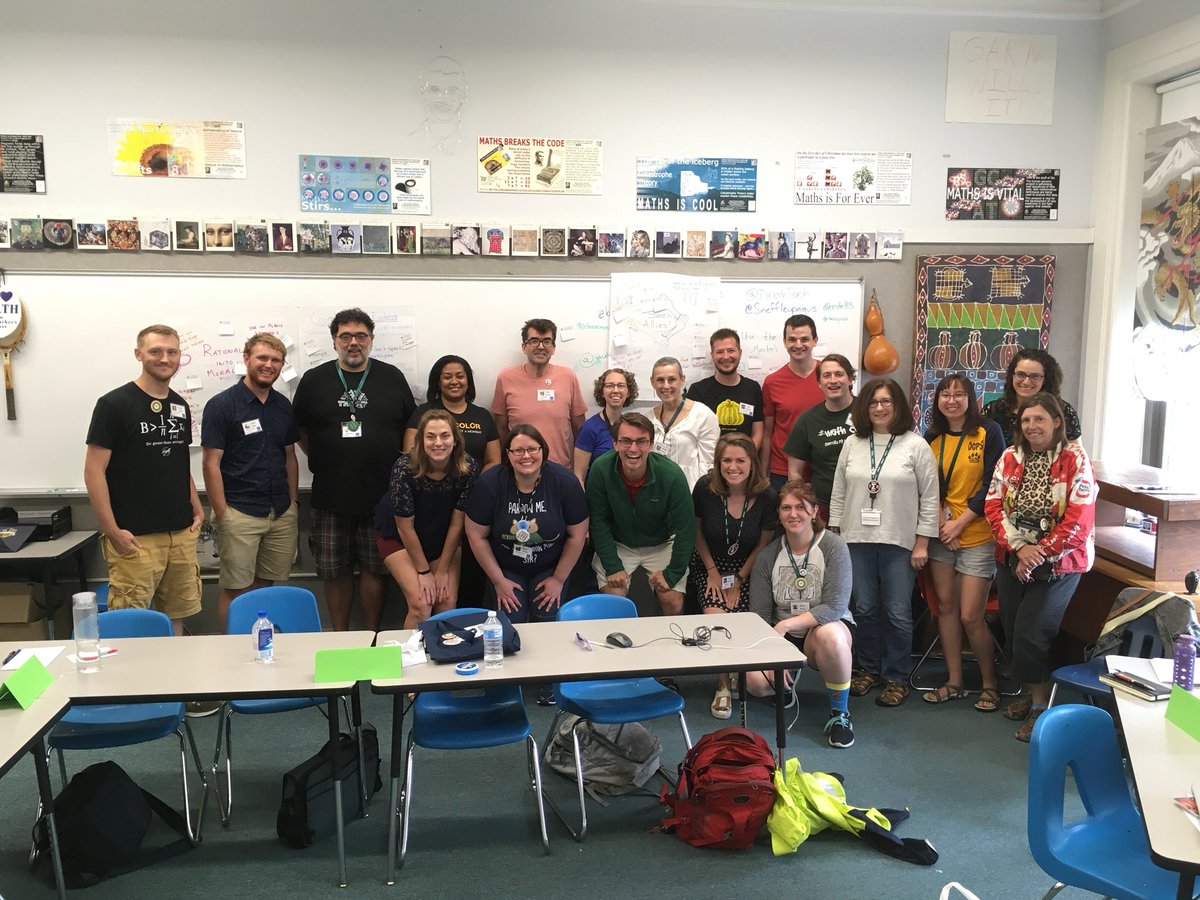I've been going back and forth on what my takeaways from the conference were, because every session I went to felt like I took something away. I have been going to quite a few different conferences mostly around the state of Nebraska and went to ISTE last year in San Antonio and felt like I haven't taken away anything in a long time. Since I have to narrow it down I will talk about two big takeaways I felt permeated through my TMC experience.
1. Using equity and social justice as a way of teaching mathematics. Marian Dingle and Wendy Menard took us on a path of self discovery and identity to teach students better. Using social justice standards to help frame lessons and discussions to help build classroom activities. The last day we split into small groups and the group I was apart of focused on ideas for classroom activities that promoted social justice, some of the notes taken from that are here.
This is a conversation that I have wanted to have with others in my building for four long years. Are we doing what is best for all students? What practices and approaches can we take to include all students? This is a discussion I want to keep having, especially with others in my state.
Also I want to thank Dr. Robert Berry for being there and representing NCTM, I haven't been a member for three years now, but seeing him there shows the trajectory that I think NCTM will go and I think it is a place that all teachers should evaluate. I will definitely be renewing my membership to NCTM.

2. My second thing that I took away from TMC was how incredibly nice everyone is. When I showed up that first day early to register I was given my badge and a button to wear that said, "FIRST!" and since I showed up early I thought to myself that this might be a badge of shame, that this would have been my first time there. However, wearing that badge the first day other people came up to me and made connections with me. For one of the first times in the #mtbos community I felt like I belonged, all because of a simple badge.
I would love to go to #TMC19 in Berkeley, but others deserve a chance to go and I will wait till it makes its way back to the Midwest to go again.


